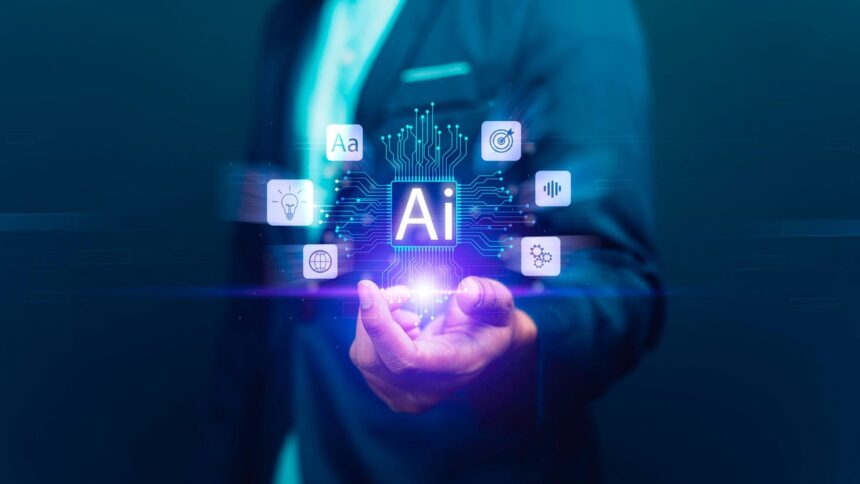Most of us do not think about copyright very often in our daily lives. But in the era of generative AI, it has quickly become one of the most important issues in the development and results of chatbots and image and videos generators. It is something that affects us all because all the owners and authors of the copyright.
Unfortunately, copyright and AI are a disaster. The career to develop the most advanced AI models does not show signs of deceleration in the short term. To create these next gene models, technology companies seek a lot of content generated by humans. They need these works to improve their AI models, either giving a chatbot a more realistic personality or a more artistic styles generator to refer. On the other hand, AI enthusiasts could be wondering if it is possible to receive protection against copyright for creative works enabled for AI.
Most AI companies have been very vague about the content they use, which has led to more than 30 demands of more than 30 lawsuits through US courts. You may have heard of some more notable, such as the New York Times v. Openai, in which the editor alleges that Chatgpt used the stories of journalists literally without an appropriate attribution or permission. (Disco: Ziff Davis, Cnet’s Parent Company, in April Filled A Lawsuit Against Openai, Alleging It Infringed Ziff Davis Copyrights in Training and Operating ITS AI Systems.) Meta’s Also Been In Hot Water Recently, As The Atlantic Repyrhanged and Publish Published and published and published and published and published and published and published and published and published and published and published and published and published and published and published and published and published and pillad and public pilot and pilot and publish and publish and publish and publish and the pirate books that the company supposedly used without permission to train its AI.
I spend a lot of time thinking about copyright and AI in my work informing about creative services. I have interviewed intellectual property lawyers, spoken to many worried creators and spent too much time to the government agencies. I have used that experience to make this guide about what you need to know about copyright in the AI era, which we will keep it updated as things change.
What is copyright?
Copyright is a set of rights expressed that protect “original works of the author’s ship established in any means of tangible expression, now known or later developed, of which they can be perceived or communicated in another way”, in accordance with the copyright or 1976.
In other words, copyright is a legal protection that gives the original authors the rights and control over their original works. Copyright protection can be applied to books, art, music, movies, computer programs, blogs, architectural designs, plays, choreography and more. We are all copyright owners. As the United States copyright says: “Once you create an original job and fix it, such as taking a picture, writing a poem or blog or recording a new song, you are the author and the owner.”
There are a couple of ways in which copyright intersect with AI. On the output side, people who use AI services such as chatbots and image generators because knowing if their work enabled for AI is eligible for copyright protection. On the development side, there are many groups about AI companies that use copyrights illegally. This is what we know so far.
Can I copyright an image or text that I generated with AI?
As with many legal questions, the answer is: it depends.
Our orientation on this question comes mainly from the US Copyright Office. UU., The Federal Agency in charge of copyright administration. The office has published a series of reports on AI and Copyright with its last guide. In the second report, the office maintained its position that the images and videos generated by AI are not eligible for copyright protection.
However, there are a series of generative edition tools now available. These tools are not used for wholesale creation, but use to do things such as adding or eliminating objects, actors of the era or refine audio and video. You can still register and potentially receive protection against copyright for the content edited AI, but you must reveal its use of AI. In the Public Registry Portal, you can see in the notes how people used in the creation of their work with copyright.
Can the copyright content be used to train the AI?
The basic premise in the copyright law is that the head of the rights, usually the original creator, sometimes in other cases a person can be the employer, can decide how they want their jobs to use. In many cases, owners choose to license their content; This allows people to use copyright work, for a fairy, with a clean attribution. So, if a copyright owner wants to give permission to an AI company to use its content to train AI models, there is nothing or illegal in that. Many editors, including Financial Times and Axel Springer brands, have reached multimillionaire agreements with AI companies to do exactly that.
Problems arise when AI companies use enhancedly contained with copyright without the first recovery permit of copyright. And that is what the creators claim that they happened in many demands, including a collective claim directed by the conceptual artist Karla Ortiz against the ai stability. There are currently more than 30 active demands between AI and creators on copyright groups.
Decades of copyright law are not allowed saying such use, without permission. Some of the creators allege that technology companies violated their copyright. The infraction occurs when a job with copyright is “reproduced, distributes, performs, publicly exhibits or becomes a derivative work” without the permission of the head of copyright, as defined by the copyright office.
It will depend on the courts to decide whether the use of copyright material in the development of AI reaches the infringement threshold. Meanwhile, many technological companies are trying to follow an alternative solution: an exception of fair use.
What is fair and what has to do with AI?
The doctrine for fair use is a fundamental part of the copyright law, part of the copyright law of 1976. Fair use allows people to use copyright content without the express permission of the holder for specific purposes. In the era prior to the AI, the cases of fair use included a teacher who used a book with copyright for educational purposes or a reporter who refers to a work protected by copyright in the news coverage. There are four factors that help determine if the use of some can qualify as a fair use, which includes:
-
The purpose of use: How would the person who use copyrights use? Commercial interests, if someone can make money with use, are important here.
-
The nature of the copyright: What is the real format of dispute work? Is it a fact as a newspaper or highly creative article?
-
The quantity and substantiality of use: How much of a job protected by copyright do you want to use? Even if it’s just a bit, if it’s the “heart of work”, that may not be eligible for a fair use defense.
-
The effect on the market: By using copyright work in a proposed way, will you compete with the original author? And what effect that will have on the market in general?
There are questions about each factor when it comes to fair use and AI, Christian Mammen, an intellectual property lawyer and managing partner in Womble, Bond and Dickinson Firm, told me in an interview. There is also a debate on whether the factors of fair use apply to the entrance, exit or both. “Does that apply on the entrance side, where it takes all the work on these training dates, or is applied on the output side, where it can be a little recognizable influence and a little particular work at the exit?” Mammen said.
Technology companies are pressing for an exception of fair use, would allow them to use copyright content with all rights holders and pay licenses. For colleagues such as Openai and Google, who have already spent billions of dollars in development, an exception of fair use would save considerable time and money. Google said the fair use would allow him to continue innovation quickly; Operai adopted a parallel approach and said that the innovation of the obstacles is a matter of national security.
Giving to the technological companies In March, more than 400 writers, actors and directors signed an open letter asking the Trump administration not to grant Openai and Google an exception of fair use. They wrote that Google and Openi “are arguing for a special exemption from the government so that they can freely exploit the creative and knowledge industries of the United States, despite their substantial income and aviaxable funds.
The Essentially copyright author office was about the issue of fair use, saying in its third report that there could be cases in which a fair use case could be made, but there are times when the necessary criteria would not do. Without federal legislation, we are likely to have to wait for some or decisions in the thesis court to establish new legal precedents for copyright and the right use in the AI era.
What does all this mean for the future?
Copyright owners have a retention pattern for now. But beyond legal and ethical implications, copyright in the AI era raises important questions about the value of creative work, the cost of innovation and the ways in which we need or must have intervention and government protections.
There are two different ways of seeing the intellectual property laws of the United States, said Mammen. The first is that these laws were promulgated to encourage and reward human flowering. The other is more economically focused; The things we are creating have value, and we want our economy to recognize that value accordingly.
“During most of our history, the humanistic approach and the industrial policy approach have been quite well aligned,” Mammen said. But the generative AI has highlighted the different copyright approaches and the IP.
“Are these laws mainly as a issue of industrial economic policy, or are they as part of a humanistic approach that values and encourages human flowering rewarding human creators?” Mammen asked. “At the highest and most abstract level, I would say that it is one of the questions that thesis debates are forced to thesis.”




